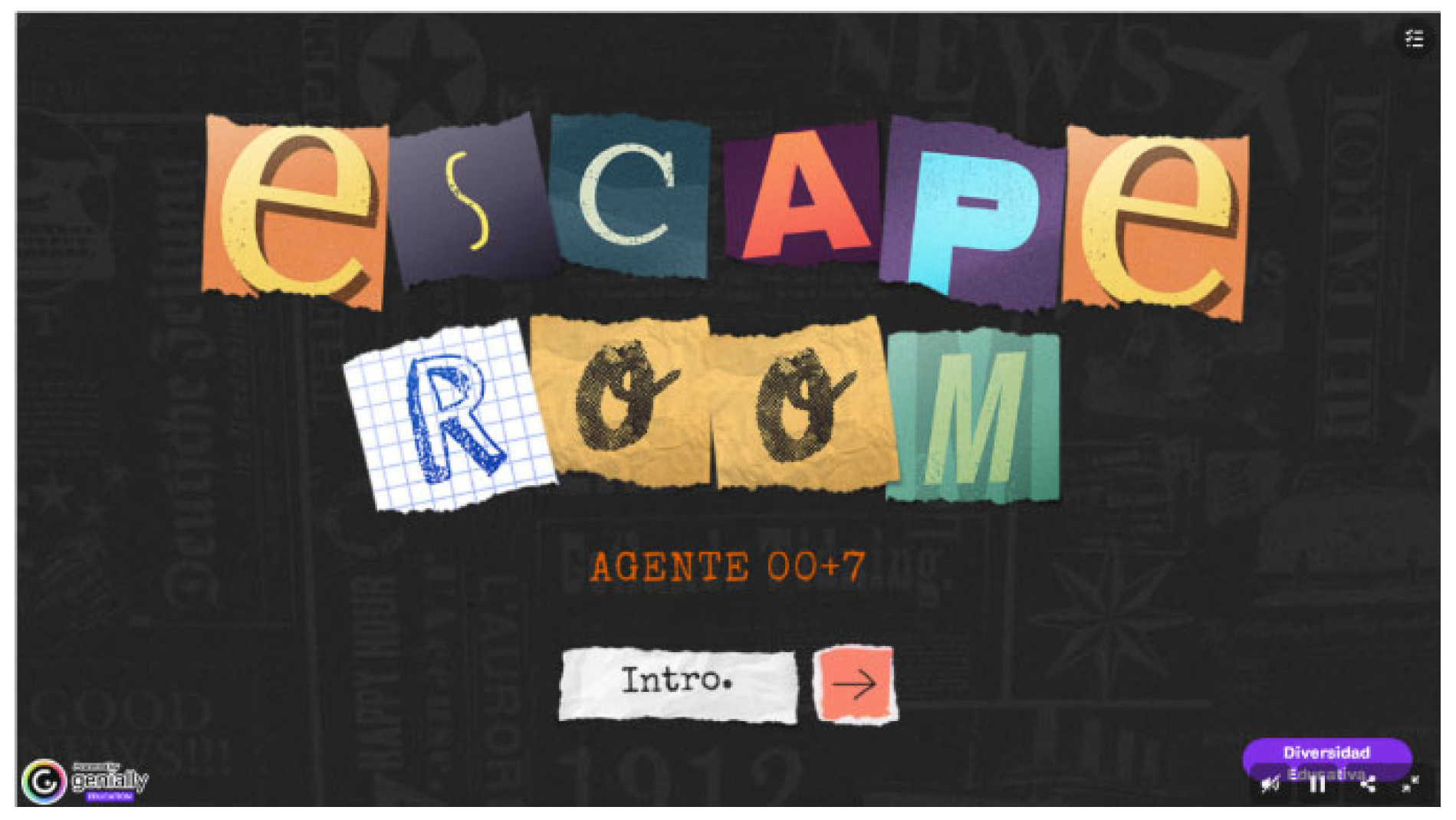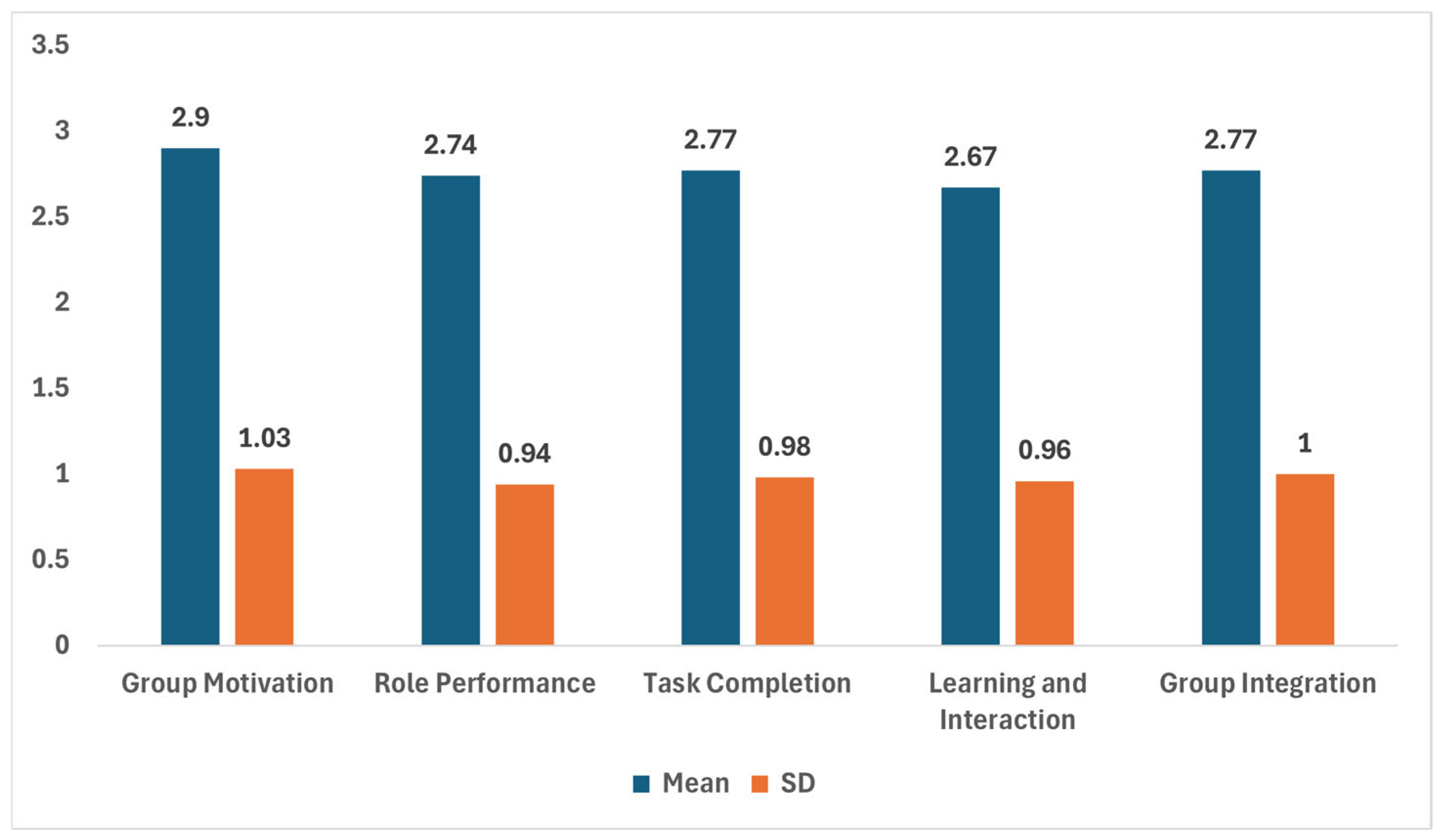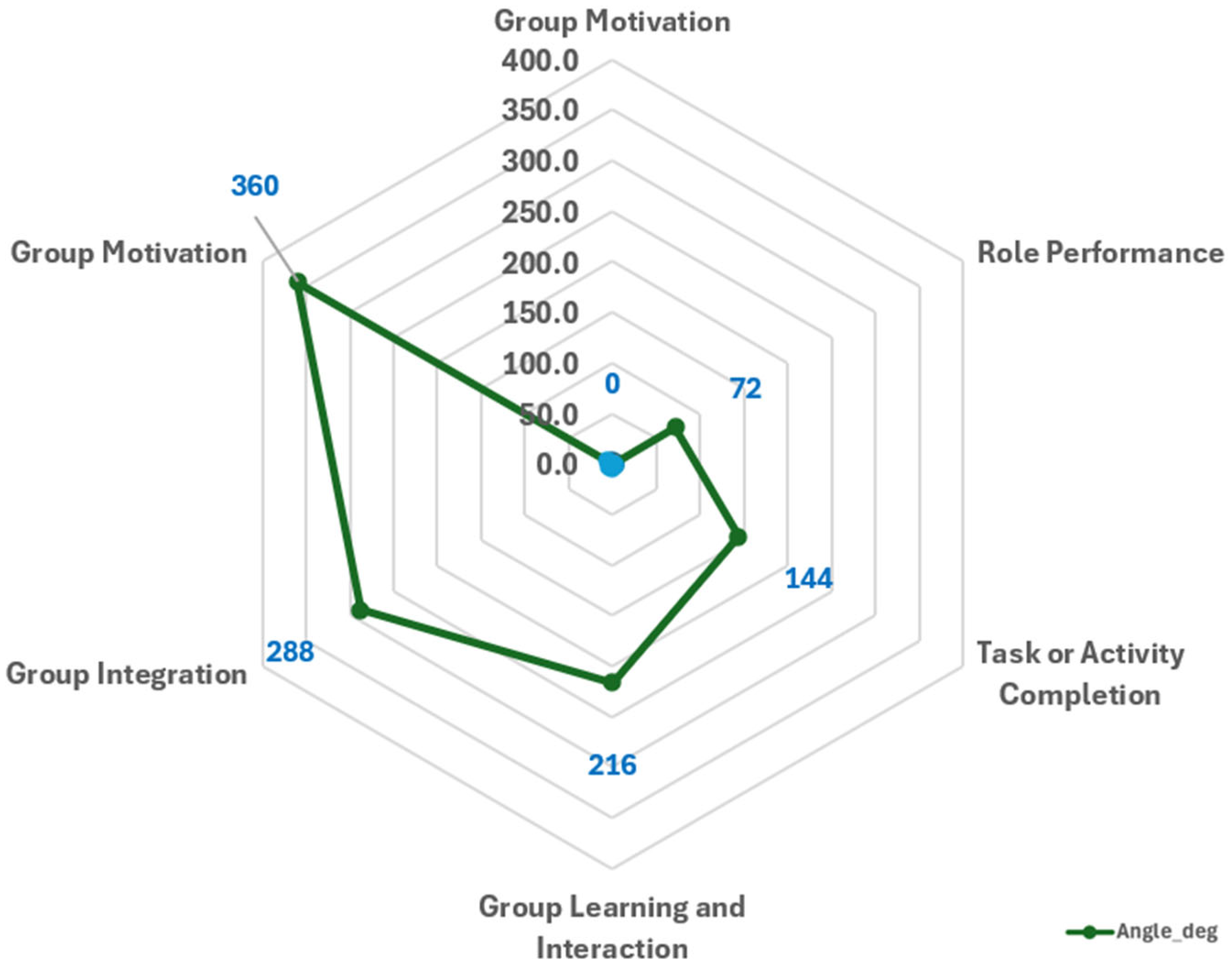Design and Implementation of a Gamified Math Game for Learning Whole Numbers in Secondary Education Using Genially
Abstract
1. Introduction
2. Literature Review
2.1. The Colombian Context in Mathematics Education
2.1.1. Current Overview of Mathematics Education in Colombia
2.1.2. Challenges and Opportunities for Mathematics Education in the Country
- -
- Educational equity: According to statistics from the Ministry of National Education, urban areas in Colombia have access to various technological and pedagogical resources, while rural areas face significant limitations, including a shortage of materials, obsolete infrastructure, multigrade classrooms, and teachers who are poorly trained in the different places they teach.
- -
- Student motivation: It is no secret that many students perceive mathematics as one of the most challenging and complex subjects, and some question its relevance in their daily lives, which leads to disinterest and poor performance.
- -
- Teacher training: Although efforts are being made to update Colombian teachers, many are hesitant to change, so they continue to use traditional approaches, which prevents students from experiencing pedagogical innovation.
- -
- Integration of active methodologies: Problem-based learning and the use of cross-curricular or interdisciplinary projects have proven to be effective strategies for engaging students with academic content.
- -
- Sustained teacher training initiatives through departmental education secretariats aim to strengthen teachers’ pedagogical skills, emphasizing modern teaching methods applicable in any school environment or context.
- -
- Curriculum innovation: Educational institutions should incorporate real-world texts into mathematics teaching, aiming to increase relevance for students and make it more engaging for them.
2.1.3. The Role of Digital Technologies in Secondary Education in Colombia
2.2. Teaching Operations with Whole Numbers
2.2.1. Importance of Operations with Whole Numbers in the Secondary School Curriculum
2.2.2. Main Difficulties Faced by Students in Learning Integers
2.2.3. Traditional and Contemporary Methods for Teaching Operations with Whole Numbers
2.3. Theoretical Basis of Gamification
2.3.1. Definition and Characteristics of Gamification
2.3.2. Principles and Strategies of Gamification Applied to the Educational Field
2.3.3. Impact of Gamification on Student Learning and Motivation
2.3.4. Review of Previous Studies on Gamification in the Colombian Context and in the Field of Mathematics
2.4. The Genially Platform in Education
2.4.1. Description of the Platform: Features and Tools
2.4.2. Educational Uses of Genially in the Creation of Interactive Content
2.5. The Articulation of the Genially Platform with the Sustainable Development Goals
3. Materials and Methods
3.1. Contextualization and Design of the Innovation Project
3.2. Contextualization of the Innovation Project
3.3. Target Audience of the Innovation Project
3.4. Innovation Project Methodology
- Objectives: The general and specific objectives of gamification are outlined, taking into account the learning objectives established by the Colombian Ministry of Education (MEN).
- Content: The skills, assessment criteria, and assessment indicators corresponding to the learning objectives that sixth-grade secondary school students need to achieve are selected.
- Selection of dynamics: Finally, the narrative, limitations, emotions, and progression of gamification are defined. We will now provide more detailed information, see Table 2:
3.5. Testing and Simulation Environment
3.6. Results
3.7. Evaluation of Teaching–Learning Processes
3.8. Evaluation of the Innovation Project
4. Discussion
5. Conclusions
5.1. Limitations
5.2. Prospective
Author Contributions
Funding
Institutional Review Board Statement
Informed Consent Statement
Data Availability Statement
Conflicts of Interest
Appendix A
Appendix A.1. Survey Items Grouped by Dimension
| Dimension | Survey Item | Response Options |
|---|---|---|
| Motivation | Group motivation: the level of enthusiasm and willingness shown in the mission. | Superior: The group is fully motivated, showing constant enthusiasm. |
| High: Most of the group is motivated, though some showed disinterest. | ||
| Basic: Motivation is inconsistent; some individuals show willingness, while others do not. | ||
| Low: No motivation; the work was completed without interest. | ||
| Role performance | The degree to which members assumed and carried out assigned functions within the group. | Superior: Roles are clearly defined, and all members fulfilled them responsibly. |
| High: Roles were performed adequately, with minor shortcomings. | ||
| Basic: Roles were unclear, and some students did not comply with the instructions. | ||
| Low: Roles were not performed. | ||
| Task completion | Compliance in the completion of tasks or activities. | Superior: All tasks completed on time with excellent quality. |
| High: Most tasks completed on time and of good quality. | ||
| Basic: Some tasks completed, with delays or quality issues. | ||
| Low: Tasks not completed. | ||
| Learning/interaction | Level of knowledge acquired through collaboration and interaction among group members. | Superior: Strong learning resulting from constant and productive interaction. |
| High: Most of the group shows good learning due to interaction. | ||
| Basic: Limited learning, little interaction. | ||
| Low: No significant learning or interaction. | ||
| Group integration | Degree of cohesion, participation, and sense of belonging within the evaluated mission. | Superior: Fully integrated group, with active participation and respect. |
| High: Well-integrated group, with some occasional difficulties. | ||
| Basic: Partial integration, some isolated members. | ||
| Low: No integration; the group worked individually. |
Appendix A.2. Brief Lesson Plan for the Gamified Activity
| Component | Description |
|---|---|
| Topic | Whole numbers: addition, subtraction, multiplication, and division |
| Grade level | Sixth grade (students aged 11–13) |
| Duration | 90 min (divided into 5 missions) |
| Objectives | (1) Reinforce basic operations with whole numbers. |
| (2) Promote collaboration and teamwork. | |
| (3) Foster motivation through gamified dynamics. | |
| Resources | Genially platform, laptops/smartphones, projector, printed clues |
| Procedure | Introduction (10 min): teacher explains mission context and rules. |
| Missions (60 min): students solve 5 gamified challenges in teams. | |
| Debriefing (20 min): reflection, feedback, and completion of self-assessment survey. | |
| Assessment | Performance in missions, teacher observation, and student self-assessment. |
References
- Hossein-Mohand, H.; Trujillo-Torres, J.-M.; Gómez-García, M.; Hossein-Mohand, H.; Campos-Soto, A. Analysis of the Use and Integration of the Flipped Learning Model, Project-Based Learning, and Gamification Methodologies by Secondary School Mathematics Teachers. Sustainability 2021, 13, 2606. [Google Scholar] [CrossRef]
- Chen, M.; Hastedt, D. The paradoxical relationship between students’ non-cognitive factors and mathematics & science achievement using TIMSS 2015 dataset. Stud. Educ. Eval. 2022, 73, 101145. [Google Scholar] [CrossRef]
- United Nations. Transforming our World: The 2030 Agenda for Sustainable Development; UN: New York, NY, USA, 2023. [Google Scholar]
- Ballenas, G.J. Improving the Computational Skills in Integers, Fractions, and Decimals Through Technology-Enhanced Mathematics Instruction (TEMI). Am. J. Educ. Res. 2023, 11, 603–613. [Google Scholar] [CrossRef]
- Wood, R.M. A review of education differences in urban and rural areas. Int. Res. J. Educ. Res. 2023, 14, 1–3. [Google Scholar] [CrossRef]
- Christopoulos, A.; Mystakidis, S. Gamification in education. Encyclopedia 2023, 3, 1223–1243. [Google Scholar] [CrossRef]
- United Nations. Sustainable Development Goals (SDGs) and Disability. 2022. Available online: https://www.un.org/development/desa/disabilities/about-us/sustainable-development-goals-sdgs-and-disability.html (accessed on 21 July 2025).
- Palinussa, A.L.; Molle, J.S.; Gaspersz, M. Realistic mathematics education: Mathematical reasoning and communication skills in rural contexts. Int. J. Eval. Res. Educ. 2021, 10, 522. [Google Scholar] [CrossRef]
- Cabra Hernández, H.W. What factors are related to the socioeconomic gaps in school achievement between boys and girls in Bogotá, Colombia? LATAM Rev. Latinoam. Cienc. Soc. Humanidades 2024, 5, 144. [Google Scholar] [CrossRef]
- Frahm, M.; Cianca, M. Will They Stay or Will They Go? Leadership Behaviors That Increase Teacher Retention in Rural Schools. Rural. Educ. 2021, 42, 1–13. [Google Scholar] [CrossRef]
- Okoye, K.; Hussein, H.; Arrona-Palacios, A.; Quintero, H.N.; Ortega, L.O.P.; Sanchez, A.L.; Ortiz, E.A.; Escamilla, J.; Hosseini, S. Impact of digital technologies upon teaching and learning in higher education in Latin America: An outlook on the reach, barriers, and bottlenecks. Educ. Inf. Technol. 2023, 28, 2291–2360. [Google Scholar] [CrossRef]
- Shaturaev, J. Indonesia: Superior policies and management for better education (Community development through Education). Архив научных исследoваний 2021, 1, 1–10. [Google Scholar]
- Ciprian, V. Gamification—An Innovative Teaching Method; Galaţi University Press: Galati, Romania, 2021. [Google Scholar]
- Mc Kevitt, C.; Porcenaluk, S.; Connolly, C. Effective Professional Development and Gamification Enacting Curriculum Changes in Critical Mathematics Education. Educ. Sci. 2025, 15, 843. [Google Scholar] [CrossRef]
- Uchima-Marin, C.; Murillo, J.; Salvador-Acosta, L.; Acosta-Vargas, P. Integration of Technological Tools in Teaching Statistics: Innovations in Educational Technology for Sustainable Education. Sustainability 2024, 16, 8344. [Google Scholar] [CrossRef]
- Maryana, M.; Halim, C.; Rahmi, H. The Impact of Gamification on Student Engagement and Learning Outcomes in Mathematics Education. Int. J. Bus. Law Educ. 2024, 5, 1608–1697. [Google Scholar] [CrossRef]
- Lomos, C.; Seineke, U.; Kesting, F.; Luyten, J.W. The Design of Incentive Systems in Digital Game-Based Learning: How Primary School Children Interact with It. Educ. Sci. 2023, 13, 668. [Google Scholar] [CrossRef]
- Hidayat, R.; Qi, T.Y.; Ariffin, P.N.B.T.; Hadzri, M.H.B.M.; Chin, L.M.; Ning, J.L.X.; Nasir, N. Online game-based learning in mathematics education among Generation Z: A systematic review. Int. Electron. J. Math. Educ. 2024, 19, em0763. [Google Scholar] [CrossRef]
- Ester, P.; Mampaso, J.; Díaz, R.M.; Galán, D. Impact of Gamification on the Development of Mathematical Competence in University Students with Intellectual Disabilities. Eur. J. Spec. Needs Educ. 2025, 1–11. [Google Scholar] [CrossRef]
- Li, M.; Ma, S.; Shi, Y. Examining the effectiveness of gamification as a tool promoting teaching and learning in educational settings: A meta-analysis. Front. Psychol. 2023, 14, 1253549. [Google Scholar] [CrossRef] [PubMed]
- Zambrano, C.B. Gamification as a didactic strategy for teaching Mathematics in elementary education. J. Adv. Educ. Sci. Humanit. 2025, 3, 21–32. [Google Scholar] [CrossRef]
- Barrera, P.; Maier, H. Implementation of Genially as a strategy in the teaching-learning process of Natural Sciences. Mendive-Revista Educ. 2024, 22, e3722. [Google Scholar]
- Alquthami, T.; Milyani, A.H.; Awais, M.; Rasheed, M.B. An incentive based dynamic pricing in smart grid: A customer’s perspective. Sustainability 2021, 13, 6066. [Google Scholar] [CrossRef]
- Ruiz, J.J.R.; Sanchez, A.D.V.; Figueredo, O.R.B. Impact of gamification on school engagement: A systematic review. Front. Educ. 2024, 9, 1466926. [Google Scholar] [CrossRef]
- Ospina Agudelo, J. Genially, Agente 00+7. 2025. Available online: https://view.genially.com/67a180ffdcf08f2df49cae68/interactive-content-agente-007 (accessed on 15 September 2025).
- Norman, G. Likert scales, levels of measurement and the “laws” of statistics. Adv. Health Sci. Educ. Theory Pract. 2010, 15, 625–632. [Google Scholar] [CrossRef] [PubMed]
- Triantafyllou, S.A.; Georgiadis, C.; Sapounidis, T. Gamification in education and training: A literature review. Int. Rev. Educ. 2025, 71, 483–517. [Google Scholar] [CrossRef]
- Acosta-Vargas, P.; Uchima-Marin, C.; Salvador-Acosta, L. Dataset on Teaching-Learning Gamification. Mendeley Data. 2025. Available online: https://data.mendeley.com/datasets/yc4np572zs/1 (accessed on 7 October 2025).
- Moller, A.C.; Deci, E.L. Intrinsic motivation. In Encyclopedia of Quality of Life and Well-Being Research; Springer International Publishing: Cham, Switzerland, 2024; pp. 3654–3657. [Google Scholar] [CrossRef]




| Variable | Value/Distribution |
|---|---|
| Average age | 13 years |
| Age range | 11–16 years |
| Gender | 12 females (52%), 11 males (48%) |
| Access to devices | 15 own a mobile phone (65%), 5 share a device (22%), 3 have no access (13%) |
| Internet connectivity | 10 with stable access (43%), 8 with limited access (35%), 5 with no connectivity (22%) |
| Item | Description |
|---|---|
| Narrative | The narrative of the gamification is based on an escape room of a secret agent. The theme revolves around completing mathematical missions and reaching the final mission, which will provide the necessary clues to solve the case. This narrative was chosen because students enjoy secret missions, and it allows them to become agents. It is intended to motivate students to apply their knowledge and skills about integers during each mission. The narrative will be conveyed through text messages that the student will read to gain an idea of what they have to face. |
| Limitations | The main limitations of the gamified system are the five missions that are blocked. These missions will be opened as they are successfully overcome. |
| Emotions | The emotions generated in the students are key rewards to unlock the next mission. |
| Progressions | In the “Agent 00+7” gamification, participants will accumulate points for each secret key found throughout the escape room [25]. |
| Dimension | F(5,125) | p (ANOVA) | Partial η2 | ω2 | χ2(5) (Friedman) | p (Friedman) | Kendall’s W |
|---|---|---|---|---|---|---|---|
| Motivation | 1.80 | 0.118 | 0.07 | 0.03 | 12.65 | 0.027 * | 0.10 |
| Role performance | 1.57 | 0.175 | 0.06 | 0.02 | 8.69 | 0.122 | 0.07 |
| Task completion | 2.31 | 0.048 * | 0.09 | 0.05 | 10.87 | 0.054 | 0.08 |
| Learning/Interaction | 1.46 | 0.208 | 0.06 | 0.02 | 10.23 | 0.069 | 0.08 |
| Integration | 1.89 | 0.101 | 0.07 | 0.03 | 9.89 | 0.078 | 0.08 |
| Dimension | Definition |
|---|---|
| Motivation | Level of enthusiasm, interest, and willingness to actively engage in the gamified missions. |
| Role performance | The degree to which each student assumed and fulfilled their assigned functions and responsibilities within the group. |
| Task completion | Ability to finish assigned activities on time and with the required quality standards. |
| Learning/interaction | Knowledge acquisition is achieved through collaboration, communication, and interaction among group members. |
| Group integration | Degree of cohesion, participation, and sense of belonging experienced within the group during the missions. |
| Dimension | Mean | SD | Median | Median |
|---|---|---|---|---|
| Group Motivation | 2.9 | 1.03 | 3 | 1–4 |
| Role Performance | 2.74 | 0.94 | 3 | 1–4 |
| Task Completion | 2.77 | 0.98 | 3 | 1–4 |
| Learning and Interaction | 2.67 | 0.96 | 3 | 1–4 |
| Group Integration | 2.77 | 1 | 3 | 1–4 |
| Dimension | Average | Normalized | Angle_deg | Angle_rad |
|---|---|---|---|---|
| Group Motivation | 2.9 | 0.7 | 0 | 0.0 |
| Role Performance | 2.7 | 0.7 | 72 | 1.3 |
| Task or Activity Completion | 2.8 | 0.7 | 144 | 2.5 |
| Group Learning and Interaction | 2.7 | 0.7 | 216 | 3.8 |
| Group Integration | 2.8 | 0.7 | 288 | 5.0 |
| Group Motivation | 2.9 | 0.7 | 360 | 6.3 |
| Types of Assessment | Assessment Techniques | Assessment Tools | Aimed at: |
|---|---|---|---|
| Heterogeneous evaluation | Tests | Objective test | Students participating in gamification |
| Self-assessment | Observation | Rating scale | Students participating in gamification |
| Proposal evaluation | Observation | Rating scale | Students participating in gamification Teachers who implement gamification. |
| Internal Analysis | External Analysis |
|---|---|
| Strengths | Opportunities |
|
|
| Weaknesses | Threats |
|
|
| Questions | Indicator | ||||
|---|---|---|---|---|---|
| Answer according to your level of satisfaction, where 1—Very dissatisfied 2—Dissatisfied 3—Neutral 4—Satisfied 5—Very satisfied | |||||
| 1 | 2 | 3 | 4 | 5 | |
| 1. How satisfied are you with the gamification approach to learning about whole numbers? | |||||
| 2. Do you think gamification helped you better understand operations with whole numbers? | |||||
| 3. Did you feel motivated while playing the math game? | |||||
| 4. Did you enjoy working as a team with your teammates during the game? | |||||
| 5. Would you recommend this type of game to other students? 1 means you would not recommend it, and 5 means you would recommend it. | |||||
Disclaimer/Publisher’s Note: The statements, opinions and data contained in all publications are solely those of the individual author(s) and contributor(s) and not of MDPI and/or the editor(s). MDPI and/or the editor(s) disclaim responsibility for any injury to people or property resulting from any ideas, methods, instructions or products referred to in the content. |
© 2025 by the authors. Licensee MDPI, Basel, Switzerland. This article is an open access article distributed under the terms and conditions of the Creative Commons Attribution (CC BY) license (https://creativecommons.org/licenses/by/4.0/).
Share and Cite
Uchima-Marin, C.; Ospina, J.; Ospina, V.; Salvador-Acosta, L.; Acosta-Vargas, P. Design and Implementation of a Gamified Math Game for Learning Whole Numbers in Secondary Education Using Genially. Sustainability 2025, 17, 9759. https://doi.org/10.3390/su17219759
Uchima-Marin C, Ospina J, Ospina V, Salvador-Acosta L, Acosta-Vargas P. Design and Implementation of a Gamified Math Game for Learning Whole Numbers in Secondary Education Using Genially. Sustainability. 2025; 17(21):9759. https://doi.org/10.3390/su17219759
Chicago/Turabian StyleUchima-Marin, Cristian, Julián Ospina, Víctor Ospina, Luis Salvador-Acosta, and Patricia Acosta-Vargas. 2025. "Design and Implementation of a Gamified Math Game for Learning Whole Numbers in Secondary Education Using Genially" Sustainability 17, no. 21: 9759. https://doi.org/10.3390/su17219759
APA StyleUchima-Marin, C., Ospina, J., Ospina, V., Salvador-Acosta, L., & Acosta-Vargas, P. (2025). Design and Implementation of a Gamified Math Game for Learning Whole Numbers in Secondary Education Using Genially. Sustainability, 17(21), 9759. https://doi.org/10.3390/su17219759







